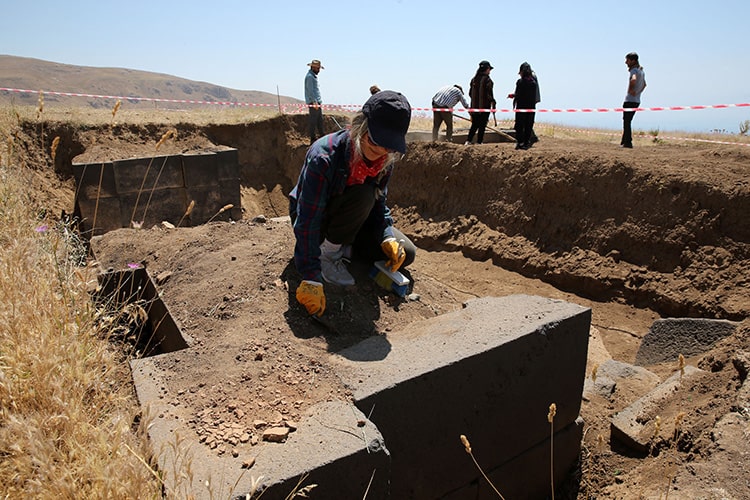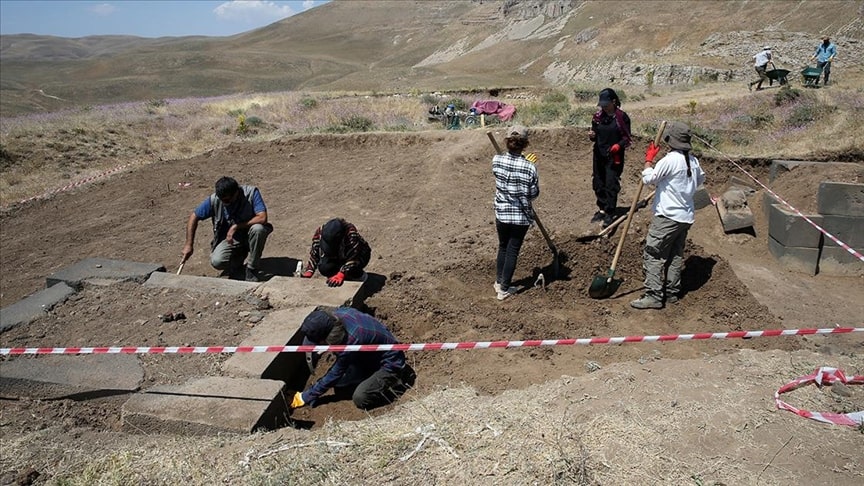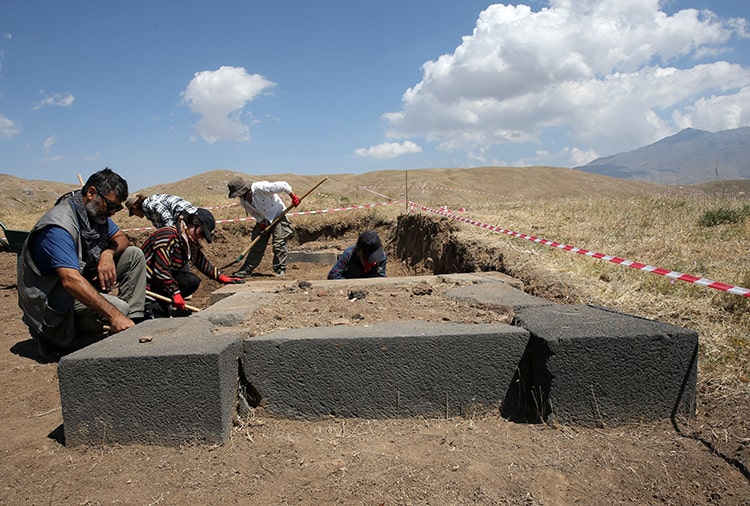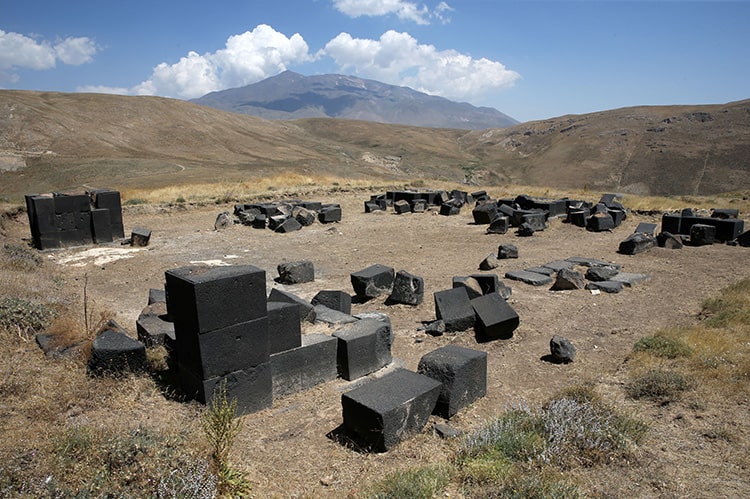
Excavations at the ancient Kef Castle shed light on the Urartian period
Archaeological excavations at Kef Castle in Bitlis, southeast Turkey, have uncovered animal bones, ceramics, and tools made of flint and obsidian.
The castle, one of four built during the reign of Urartian King Rusa II (685-645 B.C.), is located at an altitude of 2,300 meters (7,545 feet). The information that will be obtained during the excavations in Kef Castle is expected to shed light on its vast history.
With the permission and contributions of the Ministry of Culture and Tourism, excavation works are being carried out under the presidency of İsmail Coşkun, the head of the excavation, who is a faculty member of Van Yüzüncü Yıl University (YYÜ).

In the largest and highest hall of the castle, where elephant feet, kitchen, and service rooms were unearthed in previous years, 3 elephant feet, flint, obsidian (glass rock) tools, ceramics, and animal bones were found during the works carried out by a team of 20 people this year.
Assoc. Prof. Dr. İsmail Coşkun, AA correspondent, said that this year they concentrated their excavations on the part of the castle called the upper hall.

Explaining that new structures emerged as the excavations continued, Coşkun said, ‘We frequently come across Urartian blue paints and palace ceramics used by the Urartians. We found grinding stones and a lot of animal bones in the kitchen section. Animal slaughter or sacrifice ceremonies may have been organized here. Flint and obsidian tools and a lot of ceramic fragments are also found.’
Stating that a lot of basalt stone was used in the construction of the castle, Coşkun said:
‘This is the only castle where so much basalt was used during the Urartu period. We are excavating at 2,300 altitude. It is one of the places where excavation work is carried out at high altitudes. We are working in an area that challenges us. Our castle is located at the foot of Mount Süphan. They probably built the castle with the basalt stone they brought from Mount Süphan. There was a big fire in the castle, which is estimated to have lasted for days. While unearthing the hall section, we encountered an ash layer of about 60-70 centimeters. This year, we will restore the collapsed elephant legs that we have identified this year and we will ensure that our castle will have a more beautiful appearance.’

The Urartu settled many parts of Anatolia and ruled over many regions with the help of their military might. They also built numerous fortifications, participated in artistic endeavors, and created a variety of metal works.
Cover Image: AA
You may also like
- A 1700-year-old statue of Pan unearthed during the excavations at Polyeuktos in İstanbul
- The granary was found in the ancient city of Sebaste, founded by the first Roman emperor Augustus
- Donalar Kale Kapı Rock Tomb or Donalar Rock Tomb
- Theater emerges as works continue in ancient city of Perinthos
- Urartian King Argishti’s bronze shield revealed the name of an unknown country
- The religious center of Lycia, the ancient city of Letoon
- Who were the Luwians?
- A new study brings a fresh perspective on the Anatolian origin of the Indo-European languages
- Perhaps the oldest thermal treatment center in the world, which has been in continuous use for 2000 years -Basilica Therma Roman Bath or King’s Daughter-
- The largest synagogue of the ancient world, located in the ancient city of Sardis, is being restored











Leave a Reply